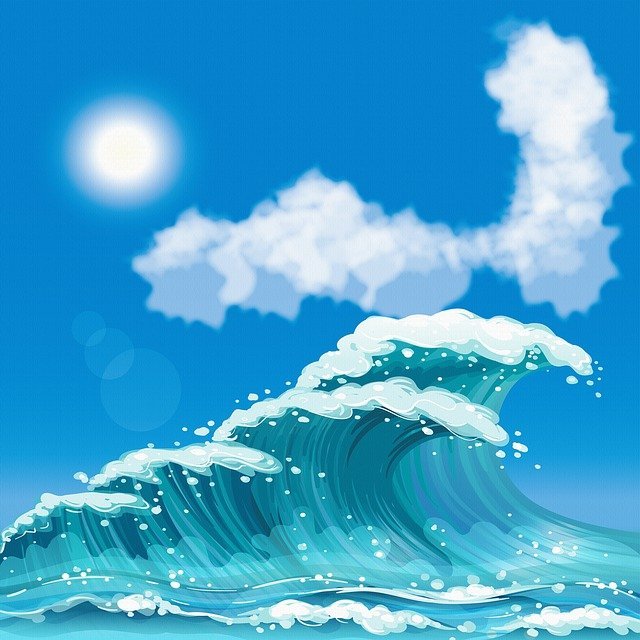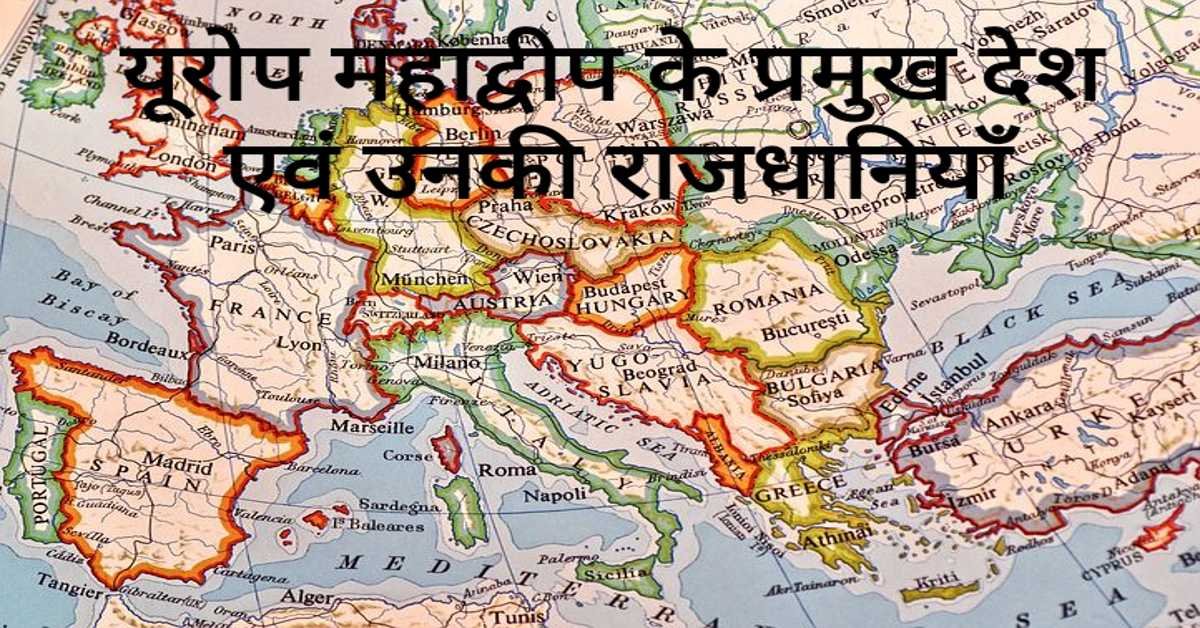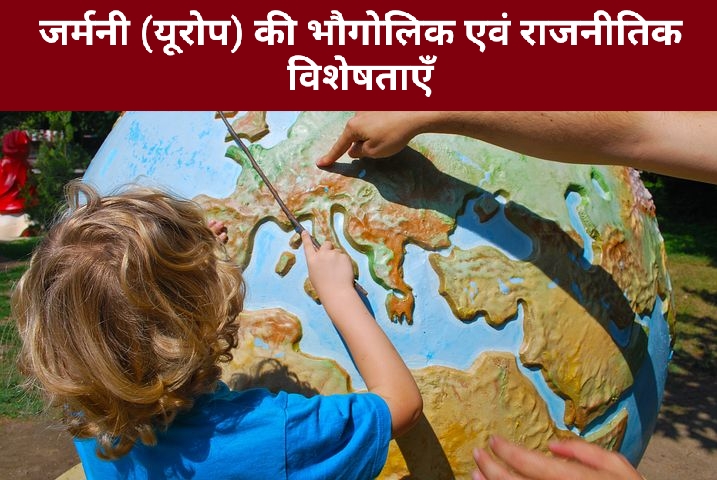
सुनामी और ज्वालामुखी || Tsunami and Volcano || विश्व के प्रमुख ज्वालामुखी || World's major volcanoes
Tsunami - Tsunami is a 'Japanese language' word. It literally means 'monkey waves' . High-energy long ocean waves are known as 'tsunami' . Their origin is due to earthquake of high intensity due to corruption in ocean floor and collision of plates. Oceanic landslides also produce tsunami waves. In addition, many times avalanches and volcanic eruptions on the ocean floor are also caused by tsunamis. The place where the tsunami in the deep ocean is the highest and the height of the wave is less. At the same place, as the tsunami moves along the coast, its length decreases and the height of the waves increases. This action is known as 'autonomous effect' . Tsunamis are the highest in extreme deep sea. In contrast there is a minimum on oceanic shores. Tsunami waves are 'shallow water waves' . It is different from tidal waves.
सुनामी की सर्वाधिक उत्पत्ति प्रशांत महासागर में होती है। अतः प्रशांत महासागर के तट क्षेत्रों में सुनामी के कारण जनधन के अत्यधिक हानि होती है। 26 दिसंबर सन् 2004 को हिंद महासागर में आए भूकंप की वजह से शक्तिशाली सुनामी उत्पन्न हुई। इस वजह से भारी जन - धन की हानि हुई। इसी प्रकार मार्च 2011 में प्रशांत महासागर के पश्चिम क्षेत्र में शक्तिशाली सुनामी आई थी। इस वजह से जापान में जन-धन की बहुत हानि हुई थी एवं अत्यधिक तबाही मच गई थी।
Tsunamis originate in the Pacific Ocean. Thus, tsunamis in the Pacific Ocean coast cause extensive loss of life. On 26 December 2004, an earthquake in the Indian Ocean caused a powerful tsunami. Due to this, there was a huge loss of public money. Similarly, in March 2011, there was a powerful tsunami in the western region of the Pacific Ocean. Because of this, there was a lot of loss of public wealth and extreme destruction in Japan.
अतः हमें सुनामी जैसी प्राकृतिक आपदाओं के लिए पहले से तैयार रहना चाहिए एवं उनके प्रभाव को कम करने के लिए प्रभावी उपाय करने चाहिए। इससे जन - धन एवं संपत्ति का कम से कम नुकसान होगा एवं मानव की सुरक्षा की जा सकेगी।
Therefore, we should be prepared in advance for natural disasters like tsunami and take effective measures to reduce their impact. Due to this, there will be minimum loss of people, wealth and property and the human will be protected.
ज्वालामुखी - पृथ्वी के अंतर्जात बल से उत्पन्न होने वाले आकस्मिक संचलन को 'ज्वालामुखी' कहते हैं। ज्वालामुखी के अंतर्गत पृथ्वी की आंतरिक परतों में पेरीडोटाइट के गलन से मैग्मा उत्पन्न होता है। जब यह मैग्मा पृथ्वी की आंतरिक परतों को तोड़कर पृथ्वी सतह पर पहुँचता है, तो उसे 'लावा' कहा जाता है। ज्वालामुखी की क्रिया के अंतर्गत लावा के अतिरिक्त गैस, राख तथा तरल पदार्थ भी पृथ्वी की सतह पर पहुँच जाते हैं। अतः मैग्मा की उत्पत्ति से लेकर उद्गार तक की संपूर्ण प्रक्रिया को 'ज्वालामुखीयता' के नाम से से जाना जाता है। इस क्रिया में सर्वाधिक जलवाष्प गैस उत्पन्न होती है। ज्वालामुखी से जलवाष्प के अतिरिक्त कार्बन डाई ऑक्साइड, सल्फर डाइऑक्साइड, नाइट्रोजन एवं हाइड्रोजन गैस उत्पन्न होती हैं।
Volcano - The accidental movement arising from the endogenous force of the Earth is called 'Volcano' . Magma is produced from melting of peridotite in the Earth's inner layers under a volcano. When this magma breaks down the Earth's inner layers and reaches the Earth surface, it is called 'lava' . Apart from lava, gas, ash and liquids also reach the surface of the Earth under the action of a volcano. Therefore, the entire process from the origin of magma to its origin is known as 'volcanism' . Most water vapor gas is produced in this process. Volcanoes produce carbon dioxide, sulfur dioxide, nitrogen and hydrogen gases in addition to water vapor.
ज्वालामुखीयता प्रक्रिया के कारण - पृथ्वी की आंतरिक परतों में रेडियोएक्टिव तत्वों के विघटन के कारण अत्यधिक तापमान की वजह से संवहनीय धाराएँ उत्पन्न हो जाती हैं। यह प्लेटों के संचलन के लिए प्रमुख रूप से उत्तरदायी होती हैं। संवहन धाराओं के कारण प्लेटों में अपसारी, अभिसारी तथा समानांतर प्लेट संचलन की उत्पत्ति हो जाती है। परंतु ज्वालामुखीयता से केवल आपसारी तथा अभिसारी प्लेट संचलन का ही संबंध होता है। अभिसारी प्लेट सीमांत पर प्लेटों के एक - दूसरे के विपरीत संचलन होने से भ्रंशन की क्रिया के कारण दाब में कमी की वजह से शांत दरार प्रकार की ज्वालामुखी क्रिया पूर्ण हो जाती है। परिणामस्वरूप महासागरीय बेसिन पर जहाँ बेसाल्ट लावा से महासागरीय कटक बनता है।वहीं महाद्वीपीय क्षेत्र पर बेसाल्टिक पठार का निर्माण हो जाता है। बेसाल्टिक पठार को 'दक्कन का पठार' भी कहा जाता है। अभिसारी प्लेट सीमांत पर अत्यधिक घनत्व वाली प्लेट का कम घनत्व वाली प्लेट के नीचे अत्यधिक गहराई में क्षेपण होने की वजह से तापमान तथा दाब की अधिकता होने से मैग्मा उत्पन्न हो जाता है। जब यही मैग्मा जब पृथ्वी की आंतरिक परतों को तोड़कर पृथ्वी सतह पर पहुँचता है, तब उस स्थिति में महाद्वीप क्षेत्र में ज्वालामुखी पर्वत एवं महासागर क्षेत्र में ज्वालामुखी द्वीप बन जाते हैं।
Due to volcanism process - Dissociation of radioactive elements in the inner layers of the Earth causes convective currents due to extreme temperatures. They are mainly responsible for the circulation of plates. Due to convection currents, divergence, convergence and parallel plate circulation are generated in the plates. But volcanism is only related to mutual and convergent plate circulation. The calm crack type volcanic action is completed due to the reduction in pressure due to the action of the fault due to the plates moving opposite to each other on the converging plate frontier. As a result, on the oceanic basin, where the basalt lava forms the oceanic ridge, the basaltic plateau is formed on the continental area. The basaltic plateau is also known as 'Deccan Plateau' . Magma is produced due to the high temperature and pressure due to the high density of the bottom of the low density plate at the convergent plate frontier. When this magma breaks the inner layers of the earth and reaches the earth surface, then in that case volcanic mountains in the continent region and volcanic islands in the ocean region become.
विश्व के प्रमुख ज्वालामुखी (World's major volcanoes) -
1. कोटोपैक्सी - इक्वाडोर (Cotopaxi - Ecuador)
2. क्राकाटाओ - इंडोनेशिया (Krakatau - Indonesia)
3. एरेनल, इराजू - कोस्टारिका (Arenal, Iruz - Costa Rica)
4. ओजोस डेल सलाडो - अर्जेंटीना - चिली (Ojos del Salado - Argentina - Chile)
5. माउंट लेमिंग्टन - पपुआ न्यू गिनी (Mount Lamington - Papua New Guinea)
6. माउंट कैमरून - कैमरून (अफ्रीका) (Mount Cameroon - Cameroon (Africa))
7. किलिमंजारो - तंजानिया (Kilimanjaro - Tanzania)
8. किलायू - हवाई द्वीप (Kilaue - Hawaiian Islands)
9. माउंट पीनटूबो - फिलीपींस (Mount Peantoubo - Philippines)
10. माउंट सेंट हेलेंस - संयुक्त राज्य अमेरिका (Mount St. Helens - United States)
11. माउंट इरेबुस - अंटार्कटिका (Mount Erebus - Antarctica)
12. माउंट एटना - सिसली (इटली)(Mount Etna - Sicily (Italy))
13. माउंट केलीमुटू - इंडोनेशिया (Mount Kelimutu - Indonesia)
14. मोना लोहा - हवाई द्वीप (Mona Loha - Hawaiian Islands)
15. माउंट रेनियर - संयुक्त राज्य अमेरिका (Mount Rainier - United States)
16. फ्यूजीयामा - जापान (Fujiyama - Japan)
17. माउंट पोपा - म्याँमार (Mount Popa - Myanmar)
18. माउंट ताल - फिलिपींस (Mount Tal - Philippines)
19. विसुवियस - इटली (नेपल्स की खाड़ी) (Vesuvius - Italy (Bay of Naples))
20. चिंबोराजो - इक्वाडोर (Chimborajo - Ecuador)
21. कटमई - अलास्का (Katmai - Alaska)
22. टकाना - ग्वाटेमाला व मैक्सिको (Bash - Guatemala and Mexico)
23. देमबंद - ईरान (Demband - Iran)
24. स्ट्राँम्बोली - लिपारी द्वीप समूह (इटली) (Stramboli - Lipari Islands (Italy))
25. लैसेन पीक - संयुक्त राज्य अमेरिका (Lassen Peak - United States)
26. हेकला व लाकी - आइसलैंड (Hekla and Laki - Iceland)
27. मेयोन - फिलीपींस (Mayon - Philippines)
28. माउंट शस्ता, माउंट हुड - संयुक्त राज्य अमेरिका (Mount Shasta, Mount Hood - United States)
29. सबनकाया - पेरू (Sabancaya - Peru)
30. कोलिमा - मैक्सिको (Colima - Mexico)
31. मेरापी - इंडोनेशिया (Merapi - Indonesia)
32. सेमेरू - इंडोनेशिया (Semeru - Indonesia)
33. एकांकागुआ - अर्जेंटीना (Acancagua - Argentina)
34. किनाबालू - मलेशिया (Kinabalu - Malaysia)
35. अलबुर्ज - ईरान (Alburj - Iran)
RF competition
INFOSRF.COM
(Watch video for related information)
संबंधित जानकारी नीचे देखें।
(Watch related information below) 👇🏻

आशा है, उपरोक्त जानकारी उपयोगी एवं महत्वपूर्ण होगी।
(I hope the above information will be useful and important. )
Thank you.
लेखक
(Writer)
infosrf.com



.jpg)




